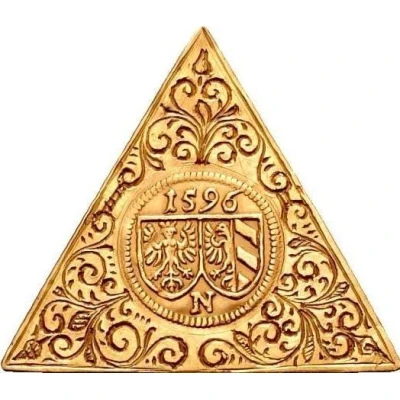1 Pfennig Klippe
| Billon (.250 silver) | - | - |
| Issuer | Free imperial city of Nuremberg (German States) |
|---|---|
| Period | Free City (1219-1806) |
| Type | Standard circulation coin |
| Years | 1600-1607 |
| Value | 1 Pfennig (1⁄210) |
| Currency | Reichsguldiner (1527-1619) |
| Composition | Billon (.250 silver) |
| Shape | Klippe |
| Technique | Klippe |
| Demonetized | Yes |
| Updated | 2024-10-05 |
| Numista | N#132430 |
|---|---|
| Rarity index | 100% |
Reverse
Blank.
Comment
Also exists with both sides struck© Image courtesy of Auktionen Münzhandlung Sonntag
Interesting fact
One interesting fact about the 1 Pfennig (Klippe) coin from the Free Imperial City of Nuremberg is that it was made using a unique metal alloy called "Billon," which consists of 250 parts silver and 750 parts copper. This alloy was commonly used in the production of coins during the Renaissance period, and it was prized for its durability and resistance to wear and tear. Despite being made of a relatively low-value metal, the 1 Pfennig coin was still considered a valuable and reliable form of currency in its time.

